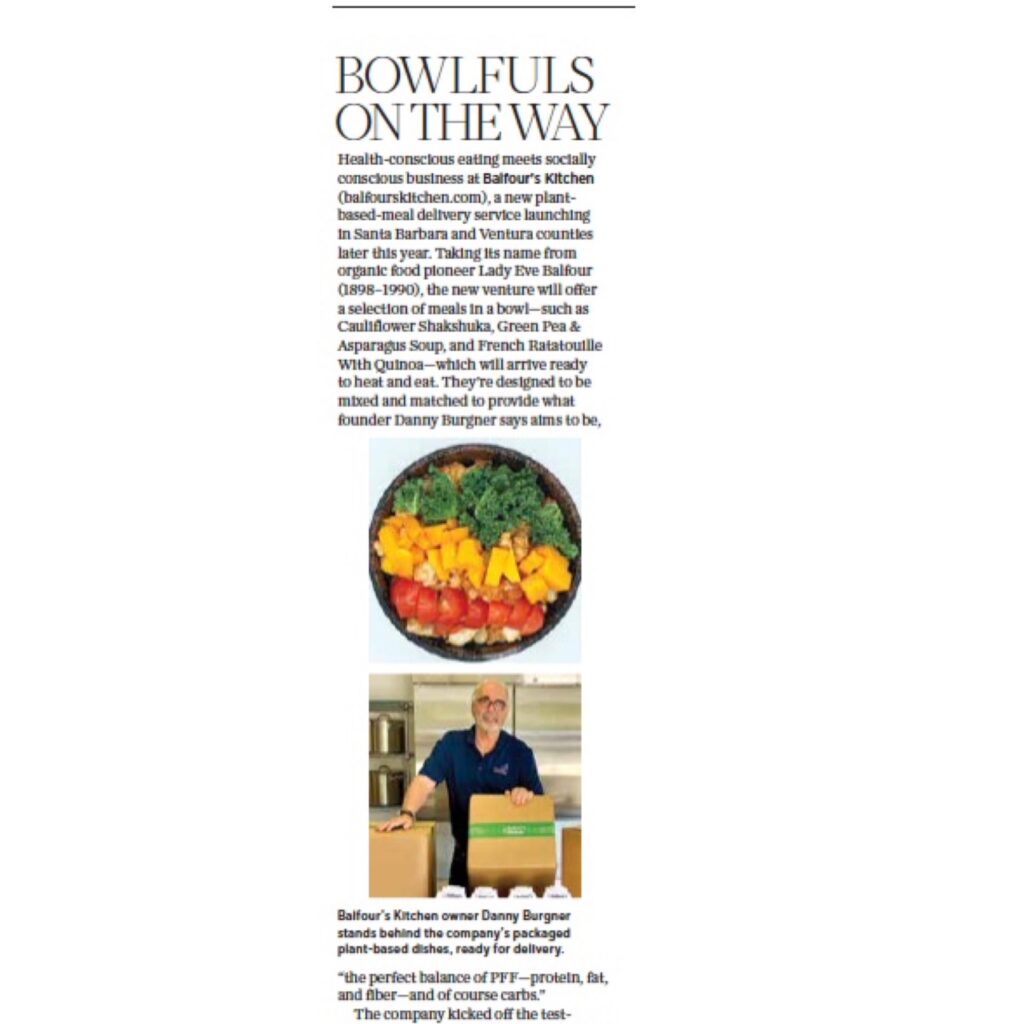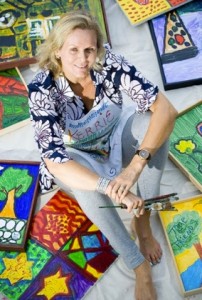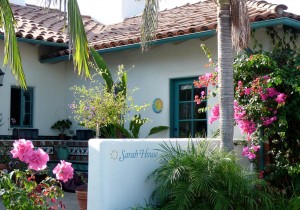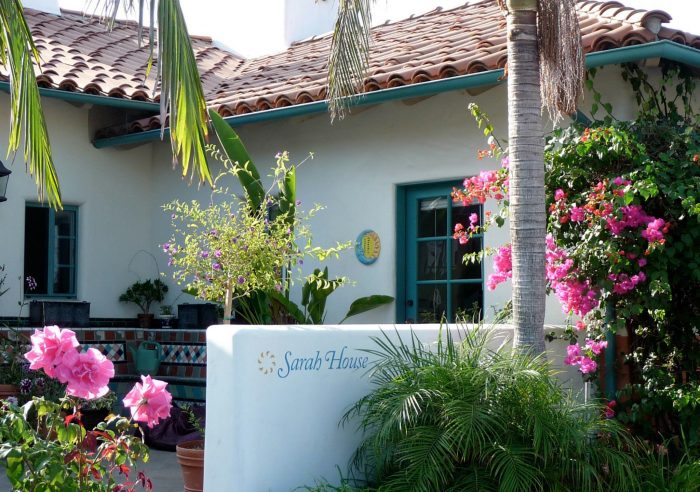They Take Pride in Giving Back
It takes passion, money and a lot of hard work for Santa Barbara’s most treasured nonprofit organizations to thrive. This community tradition of giving back by supporting education, caring for those in need, and sharing a love for nature and the arts has an incredibly generous cast of leading ladies at its helm. Not content to simply be the torchbearers, they are also keeping an eye toward the next generation of the philanthropic community.
“I’m trying to spread the circle,” says Shirley Ann Hurley. “I’ve brought young women into my life who care passionately about these sorts of things that I do and they stimulate me and …I love the excitement that is getting to know all of these wonderful people.”
Let’s meet a few of the women who help keep the community alive and well.
The Leading Ladies
Betty Hatch
La Belle Foundation, Granada Theatre, Girl Scouts, Girls Inc., Hospice, CAMA, Cottage Hospital, Council on Drug and Alcohol Abuse, the Arts Fund, Santa Barbara Zoo, Santa Barbara Art Association, Santa Barbara Museum of Art, Foodbank of Santa Barbara County, Santa Barbara Ballet
“My life has been dedicated to the teaching of self-esteem,” says Hatch, founder of La Belle Modeling Agency (1963-1991), and now executive director of the La Belle Foundation, which offers young women free training in self-esteem, self-development and personal and social responsibility.”
“Giving to the community is just a pleasure; it’s a demonstration of our gratitude and our love for everybody here.”
Shirley Ann Hurley
Santa Barbara Scholarship Foundation, Family Service Agency, Santa Barbara Public Education Foundation, CALM, Anti-Defamation League, Santa Barbara Foundation
“The things I’ve wanted to spend my time on are the things that help children and young people become the best that they can be, which means to live up to their full potential … The organization that I have probably put the most years into and time is the Family Service Agency. The concept that we could intervene early in a child’s life and with that child’s family and help them raise a more secure child was what hooked me.”
“People keep saying what do you do for fun. I said everything. All of this is fun. And it is. It’s work, but it’s fun. There’s nothing I like better than working with a group of deeply caring people. It is so exciting. And the fact that you know that together you can make a difference in somebody’s lives and your community is just such a reward.”
Gerd Jordano
Cottage Hospital Building Campaign, Westmont College Foundation, CALM
“Board members are ambassadors for those organizations. They are sort of cheerleaders and are able to sort of talk and share what that organization is and what it’s all about. It’s really an opportunity to educate people about that organization and that gives me great joy to share my passion and my knowledge about that particular organization.”
“I’m a former cheerleader so I continue that same passion, only I’m just not jumping up and down anymore (laughs). But I do get very passionate about what I get involved with and it just brings me a lot of joy.”
Carol Palladini
Santa Barbara Women’s Fund
“The concept of the Santa Barbara Women’s Fund (which will have given away more than $1 million by the end of the year) is making your time and money most effectively used by a lot of women writing checks and putting them together and doing direct fundraising, so that you’re not spending a lot of money to make money… Our umbrella is giving in support of the greater Santa Barbara area; it has to be local, to benefit unmet needs for women, children and families.”
“A lot of the work that I’ve done in the past, on and off boards, has some Heartache mixed in with the joy of it. This has been a pleasure from the beginning.”
Joanne Rapp
Santa Barbara Foundation, Santa Barbara Scholarship Foundation, CALM, Cottage Hospital, Botanic Gardens, Laguna Cottages, Montecito Community Foundation
“I have enjoyed working with organizations that are targeted at helping youth with their educational goals, in particular the Scholarship Foundation and the Santa Barbara Foundation student loan program. Everything that you work on and within the nonprofit community enhances the quality of life and the effectiveness of our community, but helping the students transfers anywhere. … It will strengthen the fabric of whatever community that they land in.”
The Next Generation
Tiffany Foster
Storyteller, Crane Country Day School, Howard School, All Saints by the Sea Parish School, Lotusland, Lobero Theatre, Santa Barbara Museum of Art SMART Families
“When I arrived in Santa Barbara four years ago … it seemed that every fabulous, intelligent person I met was volunteering for either Storyteller or Lotusland. Before I knew it I was in the center of a vibrant group of caring women and men who dedicated their energy, financial resources, and business acumen to help make a difference in our local community.”
“Storyteller Children’s Center provides daycare and preschool to homeless toddlers in Santa Barbara as well as support services for their families. Young children deserve security, safety and a stable environment. … It is difficult to find a more worthy cause.”
Kisa Heyer
Lotusland, Santa Barbara Museum of Art SMART Families, Crane Country Day School, Storyteller, Lobero Theatre, Sarah House, Santa Barbara Museum of Natural History, CAMA
“Even after being involved with Lotusland for so long, I’m still amazed by it–not only with its collections, design, architecture, and programs–but also with the story behind the garden. Madame Ganna Walska’s wonderland is such a benefit to our community. It’s magical to see joy that children (all 4th graders visit) and adults express after visiting the garden, and no surprise, really, that we are becoming world-renowned as a one-of-a-kind experience.”
Jill Levinson
Lotusland, Visiting Nurse and Hospice Care of SB, Storyteller, New Beginnings Counseling Center, Lobero Theatre, All Saints by the Sea Parish School, Santa Barbara Museum of Art SMART Families.
“I think everyone has a need for hospice care for themselves or their loved ones at some point in their life. I just feel like it’s very important to support these organizations because they’re necessary. If they disappeared that would be a travesty for our community. Our community is so fortunate to have so much to offer everyone. I think that’s part of what’s really special about Santa Barbara, it tries to take care of people.”
Laura Shelburne
Storyteller, Crane Country Day School, the Santa Barbara Museum of Art, Stanford University, Lotusland, Santa Barbara Museum of Natural History.
“Winston Churchill once said, ‘We make a living by what we get, but we make a life by what we give.’ I spent a number of years practicing corporate law, working around the clock during the Silicon Valley boom, and I always regretted that I didn’t have enough time to do worthwhile pro bono work. While I was one of those oxymoronic happy lawyers, I have to say that now it is wonderful to be able to choose my own “clients” based on causes I believe in and use my skills and experience to help non-profits. I also feel strongly that I should set an example for my children by doing things for others and for institutions that will outlast us and continue to benefit future generations.
Lisa Wolf
Santa Barbara Ballet, CAMA, Storyteller, Lotusland, Santa Barbara Zoo, Lobero Theatre, Santa Barbara Museum of Art SMART Families, French Heritage Society, Laguna Blanca
“We started a group at the art museum because we had a feeling that the art museum was reaching out really effectively to kids in town, elementary school students and underprivileged kids and it was also a great resource for very very serious art collectors, but there was nothing in the middle. … So we created this group called SMART families (and it’s Santa Barbara Museum of Art, not that we think we’re especially bright) but a really wonderful group.”
“When you know that you’ve helped make it possible for somebody to attend a program or for somebody to be exposed to opera or some great cultural moment, or to just alleviate human suffering, it’s a great privilege to be able to do it.”
 Health-conscious eating meets socially conscious business at Balfour’s Kitchen (balfourskitchen.com), a new plant-based-meal delivery service launching in Santa Barbara and Ventura counties later this year. Taking its name from organic food pioneer Lady Eve Balfour (1898–1990), the new venture will offer a selection of meals in a bowl—such as Cauliflower Shakshuka, Green Pea & Asparagus Soup, and French Ratatouille With Quinoa—which will arrive ready to heat and eat. They’re designed to be mixed and matched to provide what founder Danny Burgner says aims to be,
Health-conscious eating meets socially conscious business at Balfour’s Kitchen (balfourskitchen.com), a new plant-based-meal delivery service launching in Santa Barbara and Ventura counties later this year. Taking its name from organic food pioneer Lady Eve Balfour (1898–1990), the new venture will offer a selection of meals in a bowl—such as Cauliflower Shakshuka, Green Pea & Asparagus Soup, and French Ratatouille With Quinoa—which will arrive ready to heat and eat. They’re designed to be mixed and matched to provide what founder Danny Burgner says aims to be, Originally published in the September 2021 issue of 805 Living Magazine. Cover photo by Gary Moss. To see the story as it originally appeared click here.
Originally published in the September 2021 issue of 805 Living Magazine. Cover photo by Gary Moss. To see the story as it originally appeared click here.





